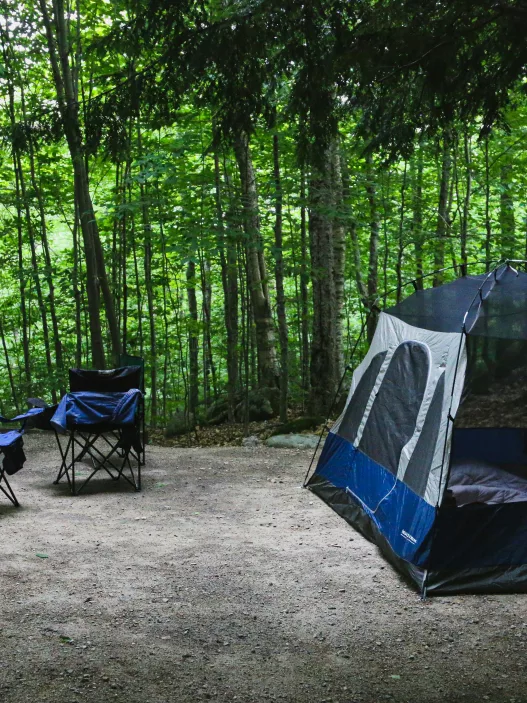Choosing the right backpack for a hiking adventure can significantly enhance the experience. Comfort, size, and weight are key factors to consider when selecting a backpack that suits individual needs. An ill-fitting pack can lead to discomfort, affecting the enjoyment of the journey.
Consider the duration and type of hike to determine the appropriate capacity. Day hikes typically require smaller packs, while multi-day excursions necessitate larger, more robust options. Additionally, it’s essential to factor in features such as adjustability and ventilation that align with personal preferences and the specific conditions of the hike.
A well-chosen backpack not only supports physical needs but also accommodates essential gear efficiently. Assessing personal thresholds for comfort and burden can guide one towards making an informed choice that enhances their outdoor adventure.
Understanding Backpack Types
Choosing the right type of backpack is essential for a successful hiking experience. Different backpacks cater to various hiking needs, from short excursions to multi-day treks. Here are three primary types to consider.
Daypacks for Short Hikes
Daypacks are designed for short hikes and typically range from 15 to 30 litres in capacity. They are lightweight and compact, ideal for carrying essentials like water, snacks, first aid kits, and a light jacket. Many daypacks come with organisation features, including multiple pockets and compartments for easy access to gear.
The shoulder straps are generally padded for comfort, and most models include adjustable sternum and hip straps to ensure a secure fit. Additional features can include hydration reservoir sleeves and external gear loops. Daypacks are suitable for day hikes where the weight of the pack is minimal and doesn’t hinder mobility.
Multi-Day Backpacks
Multi-day backpacks are built for longer trips and offer capacities ranging from 40 to 100 litres. These backpacks are designed to carry heavier loads over extended distances, making them ideal for camping or backpacking adventures. They often include more robust support systems, such as metal frames and padded hip belts, which help to distribute weight evenly.
Features often found in multi-day backpacks include multiple compartments, external loops, and attachment points for gear. Some models also come with built-in rain covers and adjustable torsos to accommodate different body sizes. These backpacks ensure that hikers can carry necessary camping gear while maintaining comfort during long treks.
Hydration Packs
Hydration packs are specifically designed to keep hikers hydrated on the go. They usually have a smaller capacity, around 1.5 to 20 litres, and are geared towards carrying a water reservoir, along with minimal essentials. Their lightweight design makes them perfect for activities like running or cycling as well as hiking.
Most hydration packs come with a built-in bladder and a drinking tube for easy access to water without stopping. Some models include additional pockets for small items like snacks or keys, but the emphasis is on hydration. They are a convenient option for those looking to stay hydrated while keeping pack weight low.
Assessing Capacity Requirements
Choosing the right capacity for a hiking backpack is essential. It ensures adequate space for gear without being excessively bulky. This section covers volume measurement and how to estimate the necessary load.
Volume Measurement Explained
Backpack capacity is often measured in litres. This indicates the amount of space available for items. Understanding volume measurement helps hikers select a pack that meets their needs.
Common sizes include:
- Daypacks: 20-30 litres, suitable for short hikes.
- Weekend Packs: 40-60 litres, ideal for trips lasting up to two nights.
- Multi-day Packs: 60 litres and above, designed for longer adventures.
It is crucial to remember that not all litres are equal. Some designs maximise storage efficiency while others may not. Choosing a well-structured bag can make a significant difference in how effectively it uses space.
Estimating Your Load
Estimating the load is vital for selecting the right backpack. Hikers need to consider clothing, food, water, and equipment. Each item adds weight and bulk, affecting the overall size of the pack required.
A general guideline is:
- Day trip: 5-10 kg
- Weekend adventure: 10-15 kg
- Extended journey: 15 kg and above
It is advisable to make a checklist of essential items. This helps in determining the total weight and volume needed. Packing efficiently can also allow for additional items without exceeding the weight limit.
Importance of a Proper Fit
A proper fit is essential for comfort and performance during hiking. When a backpack fits well, it distributes weight evenly and reduces the risk of injury. Key adjustments include torso length and the hip belt and shoulder straps, which contribute to how effectively a pack supports the hiker.
Adjusting the Torso Length
The torso length is crucial for achieving a comfortable fit. This measurement runs from the top of the hips to the base of the neck. Many backpacks come with adjustable torso lengths to cater to different body shapes.
To adjust, the user should loosen the straps and reposition the harness. Once the pack is on, the shoulder straps should rest comfortably on the shoulders without pulling the backpack away from the back. A properly adjusted torso length allows the weight to remain close to the body, promoting better balance and reducing fatigue during long hikes.
Hip Belt and Shoulder Strap Adjustments
The hip belt and shoulder straps play significant roles in load management. When properly adjusted, the hip belt transfers much of the pack’s weight away from the shoulders and onto the hips. This is vital for maintaining energy and comfort on longer treks.
To adjust the hip belt, it should sit snugly around the hips, not the waist. The straps should be tightened until the pack feels secure but not restrictive. Shoulder straps should also be adjusted to allow freedom of movement while ensuring they support the weight. Together, these adjustments enhance stability and prevent chafing or discomfort during hikes.
Material and Durability Considerations
Choosing the right materials and durability features is crucial for ensuring a backpack withstands the rigours of hiking. Understanding the specific materials can help in making an informed decision for a reliable and long-lasting option.
Common Backpack Materials
Backpacks are typically constructed from a variety of materials, each with its benefits. Common options include:
- Nylon: This is a popular choice due to its strength and lightweight nature. Ripstop nylon is particularly durable, featuring a grid pattern that prevents tearing.
- Polyester: Also lightweight, polyester tends to be less expensive. It’s resistant to UV rays but can be less durable than nylon.
- Canvas: Highly durable and water-resistant, canvas is often heavier. It can withstand harsh conditions but may absorb moisture.
- Cordura: A type of nylon, Cordura is known for its exceptional abrasion resistance. It’s ideal for rugged use and offers a good balance of weight and durability.
Selecting the right material impacts not only weight but also performance in different environments.
Weather Resistance Features
Weather resistance is a critical feature for hiking backpacks. Here are some key features to consider:
- Water-Resistant Coatings: Many backpacks feature water-resistant treatments, such as polyurethane or silicone coatings. This helps repel water but may not make the backpack entirely waterproof.
- Sealed Seams: Look for backpacks with taped or sealed seams. This prevents water from seeping through stitch holes, enhancing overall water resistance.
- Rain Covers: Some backpacks come with detachable rain covers. These provide an extra layer of protection during heavy rainfall.
- Material Choice: Selecting materials known for water resistance, like nylon with a waterproof finish, can increase protection against elements.
Ensuring a backpack has adequate weather resistance can significantly enhance the experience during unpredictable weather conditions.
Evaluating Comfort and Support
For a successful hiking experience, comfort and support are crucial. The right backpack should offer adequate padding and ventilation, along with effective load distribution. These features can significantly enhance stability and ease during long treks.
Padding and Ventilation
Padding is essential for reducing pressure on the back and shoulders. Look for backpacks with thick foam padding on the shoulder straps and back panel. This cushioning helps to absorb shocks and distribute weight evenly across the body.
Ventilation is equally important, especially on warmer days. Backpacks with mesh panels or air channels create airflow that reduces sweating. A well-ventilated design helps maintain comfort over extended periods, preventing discomfort caused by moisture build-up.
Choosing a backpack with adjustable padding can enhance fit and comfort. Consider models that allow modifications to suit individual body shapes. A personalised fit ensures that the backpack contours to the user’s back, reducing fatigue on longer hikes.
Load Distribution Technology
Effective load distribution technology minimises strain on the body. Many modern backpacks feature frame systems that transfer weight to the hip area. This design allows the shoulders to carry less weight, providing a more balanced feel.
Look for features like load lifter straps. These straps connect the top of the shoulder straps to the backpack’s back, allowing for adjustments that can elevate the pack’s position. This adjustment helps in centring the load for better stability.
Some models incorporate torso length adjustments. This feature allows users to change the pack’s height, ensuring an optimal fit. A well-fitted pack aligns the centre of gravity properly, enhancing overall comfort and support while navigating diverse terrains.
Practical Features and Accessories
Choosing the right backpack involves considering several practical features and accessories that enhance performance and usability. Key aspects such as pockets, compartments, and attachment options can make a significant difference during a hiking adventure.
Pockets and Compartments
Effective organisation is crucial in a hiking backpack. Multiple pockets and compartments allow for easy access to essential items. Look for backpacks with front pockets for frequently needed items like maps or snacks.
Side pockets can be perfect for water bottles, keeping them within reach. A main compartment with a roomy design offers flexibility for packing clothing or gear. Some backpacks feature internal organisation systems with sleeves for hydration reservoirs or laptops.
Stash pockets, often located on the hip belt or shoulder straps, can securely hold small essentials like phones or keys. They keep important items accessible without needing to dig through the main pack. Consider what items are essential for your hike when choosing a backpack with the right pocket layout.
Attachment Points and Gear Loops
Attachment points and gear loops enhance a backpack’s functionality. These features provide opportunities for carrying additional gear outside the pack, which is useful for bulky items.
Look for gear loops along the exterior of the pack. These loops can hold items like trekking poles, ice axes, or even sleeping bags. Some models include daisy chains, offering multiple attachment options for customising gear placement.
Compression straps help secure the load, preventing unnecessary movement while hiking. They can also reduce the pack’s overall size when it’s not fully loaded. Ensure your backpack includes the right configuration of these features to suit your specific hiking needs.
Balancing Weight Versus Utility
Choosing a backpack for hiking involves a critical assessment of weight and utility. Opting for a lighter pack can enhance agility, while functionality ensures access to necessary gear.
Lightweight Designs
Lightweight backpacks are designed to minimise strain during hikes. They typically use advanced materials like ripstop nylon, which offers durability without bulk. Common features include stripped-down pockets and minimalistic frames.
These designs favour essentials, ensuring that hikers carry only what is necessary. Ideal for short exercises or day trips, they usually range from 1.5 to 3.5 kg. However, sacrifices in comfort and organisation may occur with excessive lightness. Evaluating pack weight against the intended hike duration and terrain complexity is crucial.
Striking the Right Balance
Striking the right balance requires assessing weight against utility needs. Hikers should consider features that enhance experience, such as hydration reservoirs or ample storage compartments. Adding weight for better support or organisation can significantly impact comfort on long treks.
A versatile backpack might weigh more but offers features like detachable pockets, adjustable straps, or thicker padding. Understanding personal hiking style is essential. While a lightweight pack can expedite movement, it may lead to discomfort without proper support. Identifying the right weight for each adventure helps achieve an optimal hiking experience.









